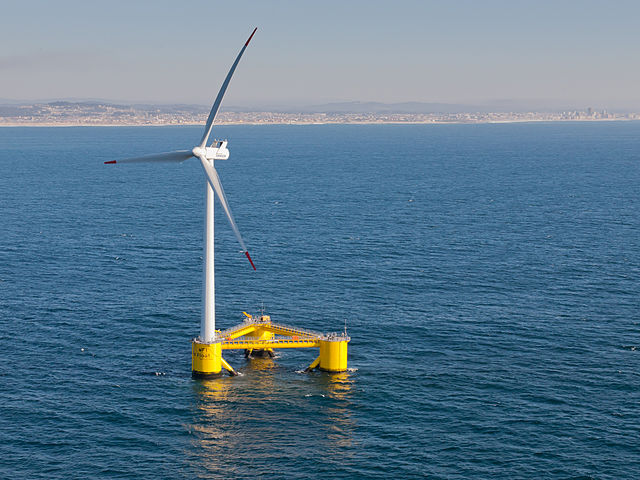Offshore wind power or offshore wind energy is the generation of electricity through wind farms in bodies of water, usually at sea. There are higher wind speeds offshore than on land, so offshore farms generate more electricity per amount of capacity installed. Offshore wind farms are also less controversial than those on land, as they have less impact on people and the landscape.
Wind turbines and electrical substation of Alpha Ventus Offshore Wind Farm in the North Sea
An illustration of a hypothetical offshore wind farm in 1977
Four offshore wind farms are in the Thames Estuary area: Kentish Flats, Gunfleet Sands, Thanet and London Array. The latter was the largest in the world until September 2018.
Progression of expected wind turbine evolution to deeper water
Wind power is the use of wind energy to generate useful work. Historically, wind power was used by sails, windmills and windpumps, but today it is mostly used to generate electricity. This article deals only with wind power for electricity generation.
Today, wind power is generated almost completely with wind turbines, generally grouped into wind farms and connected to the electrical grid.
Wind farm in Xinjiang, China
The world's second full-scale floating wind turbine (and first to be installed without the use of heavy-lift vessels), WindFloat, operating at rated capacity (2 MW) approximately 5 km offshore of Póvoa de Varzim, Portugal
Roscoe Wind Farm: an onshore wind farm in West Texas near Roscoe
A turbine blade convoy passing through Edenfield in the U.K. (2008). Even longer 2-piece blades are now manufactured, and then assembled on-site to reduce difficulties in transportation.








